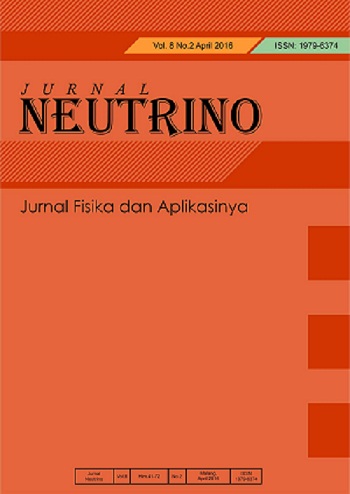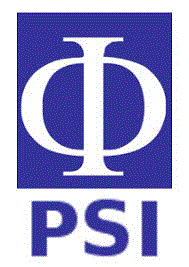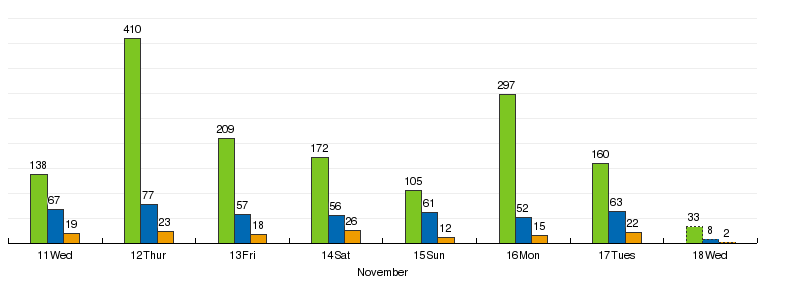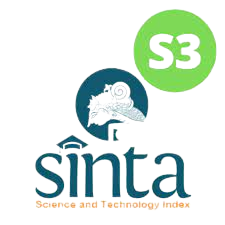CORRELATION OF MANUS RADIOGRAPH IMAGE TEXTURE VALUE WITH BONE MINERAL DENSITY LUMBAR SPINE VALUE
Abstract
Osteoporosis or bone loss is a chronic disease characterized by low bone mass accompanied by changes in micro-architecture of the bone and a decrease in the quality of bone tissue that can cause bone fragility, so that bones are easily cracked or even fractured. Osteoporosis is diagnosed by measuring bone mineral density using DXA (dual-energy X-rayabsorptiometry). Treatment with device this expensive and not widely available. So it is necessary to find an alternative method of detecting a cheap one. This study aims as an initial study to find an alternative way of early detection of osteoporosis by looking for the texture characteristics of the human bone. Sample in This study took 19 people with inclusion criteria including postmenopausal women who declared healthy, not broken bone and has no skeletal abnormalities since birth. Sample measured density mineral bone(BMD) or the degree of osteoporosis with DXA. Then an X-ray is done to get bone image. The stages of the research are: 1) preprocessing X-ray image of the human bone; 2) determine the value of the texture of the human bone image with gray level method co-occurrence matrix 3) test connection between the value of the human bone texture image with BMD lumbar spine. The results of the correlation test show that there is correlation between the value of human bone texture and BMD of the lumbar spine to characterize variance and significantly statistics (P<0.05).
Keywords
Full Text:
PDFReferences
T. Matsumoto and S. Fukumoto. Recent advances in the management of osteoporosis. F1000Research, 2017; 6: doi:10.12688/F1000RESEARCH.10682.1.
A. Qaseem, MA Forciea, RM McLean, and TD Denberg. Treatment of low bone density or osteoporosis to prevent fractures in men and women: A clinical practice guideline update from the American college of physicians. Ann. Internal. Med. 2017 Jun; 166(11): pp. 818–839.
doi:10.7326/M15-1361/SUPPL_FILE/M15-1361_SUPPLEMENT-V1.PDF.
E. Hernlund et al..Osteoporosis in the European Union: Medical management, epidemiology and economic burden: A report prepared in collaboration with the International Osteoporosis Foundation (IOF) and the European Federation of Pharmaceutical Industry Associations (EFPIA). Arch. Osteoporosis. 2013; 8, (1–2):
doi:10.1007/s11657-013-0136-1.
S. Minisola, C. Cipriani, M. Occhiuto, and J. Pepe. New anabolic therapies for osteoporosis. Internal. Emerg. Med.. 2017;12(7): pp. 915–921.
doi:10.1007/s11739-017-1719-4.
A. Mithal, B. Bansal, SC Kyer, and P. Ebeling. The Asia-Pacific Regional Audit-Epidemiology, costs, and burden of osteoporosis in India 2013: A report of International Osteoporosis Foundation. Indian J. Endocrinol. Metab. 2014; 18(4): pp. 449–454.
doi: 10.4103/2230-8210.137485.
JA Cauley. Public Health Impact of Osteoporosis. Journals Gerontol. Ser. A, 2013 Oct.; 68(10): pp. 1243–1251
doi:10.1093/GERONA/GLT093.
F. Cosman et al..Clinician's Guide to the Prevention and Treatment of Osteoporosis. Osteoporos Int. 2014 Sept; 25(10): pp. 2359–2381.
doi:10.1007/S00198-014-2794-2/TABLES/11.
T. Diamond and A. Sheu. Bone mineral density: testing for osteoporosis. Aust. Prescr. 2016; 39(2): pp. 35–39.
M. Pratiwi, Alexander, J. Harefa, and S. Nanda. Mammograms Classification Using Gray-level Co-occurrence Matrix and Radial Basis Function Neural Network. Procedia Comput. science.. 2015; 59(Iccsci): pp. 83–91.
doi:10.1016/j.procs.2015.07.340.
A Gebejes, EM Master, and a Samples. Texture Characterization based on Grey-Level Co-occurrence Matrix. Conf. Informatics Manag. Sci. 2013; pp. 375–378.
M. Kalder, I. Kyvernitakis, US Albert, M. Baier-Ebert, and P. Hadji. Effects of zoledronic acid versus placebo on bone mineral density and bone texture analysis assessed by the trabecular bone score in premenopausal women with breast cancer treatment -induced bone loss: results of the ProBONE II substudy. Osteoporosis. int. 2015; 26 (1): pp. 353–360.
doi:10.1007/s00198-014-2955-3.
S. Ivanovski and Y. Xiao. Estrogen deficiency associated bone loss in the maxilla: a methodology to quantify the changes in the maxillary intra-radicular alveolar bone in an ovariectomized rat osteoporosis model. Institute of Health & Biomedical Innovation: Queensland Universiti; 2015.
J. Yang, SM Pham, and DL Crabbe. Effects of oestrogen deficiency on rat mandibular and tibial microarchitecture. Dentomaxillofacial Radiol. 2003 Jul.; 32(4): pp. 247–251.
doi:10.1259/DMFR/12560890.
M. Shirvaikar, N. Huang, and XN Dong. The Measurement of Bone Quality Using Gray Level Co-Occurrence Matrix Textural Features. J. Med. Imaging Heal. Informatics. 2016 Oct.; 6(6): pp. 1357–1362.
doi:10.1166/JMIHI.2016.1812.
S. Hu, C. Xu, W. Guan, Y. Tang, and L. Yan. Texture feature extraction based on wavelet transform and gray-level co-occurrence matrices applied to osteosarcoma diagnosis. biomed. mater. eng. 2014 Jan.; 24(1): pp. 129–143.
doi:10.3233/BME-130793.
M. Deoker and PSN Pat. A Review on Osteoporosis Detection by using CT Images Based on Gray Level Co-Occurrence Matrix and Rule based Approach. 2017; 7(3): pp. 4765–4767.
L. Yousfi, L. Houam, A. Boukrouche, E. Lespessailles, F. Ros, and R. Jennane. Texture Analysis and Genetic Algorithms for Osteoporosis Diagnosis. 2019 Sept.; 34(5):
doi:10.1142/S0218001420570025.
JJ Hwang et al.. Strut analysis for osteoporosis detection model using dental panoramic radiography. Dentomaxillofacial Radiol. 2017; 46(7)
doi:10.1259/dmfr.20170006.
A. Valentinitsch et al.. Opportunistic osteoporosis screening in multi-detector CT images via local classification of textures. Osteoporos. Int. 2019; 30(6): pp. 1275–1285
doi:10.1007/s00198-019-04910-1.
DOI: https://doi.org/10.18860/neu.v14i2.15174
Refbacks
- There are currently no refbacks.
Copyright (c) 2022 Agus Mulyono

This work is licensed under a Creative Commons Attribution-NonCommercial-ShareAlike 4.0 International License.
Published By:
Program Studi Fisika Fakultas Sains dan Teknologi Universitas Islam Negeri (UIN) Maulana Malik Ibrahim Malang, Indonesia
B.J. Habibie 2nd Floor
Jl. Gajayana No.50 Malang 65144
Telp./Fax.: (0341) 558933
Email: neutrino@uin-malang.ac.id
This work is licensed under a Creative Commons Attribution-NonCommercial-ShareAlike 4.0 International License
View My Stats











